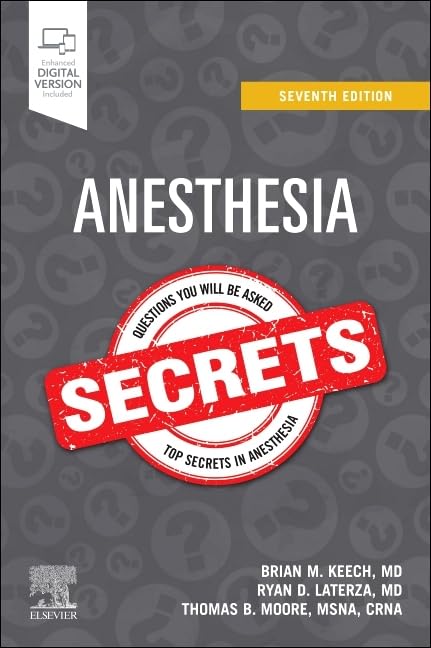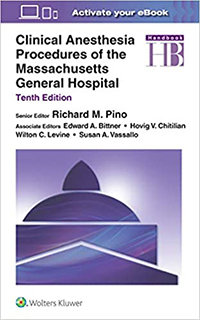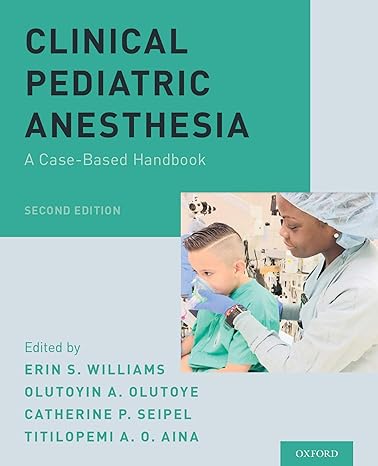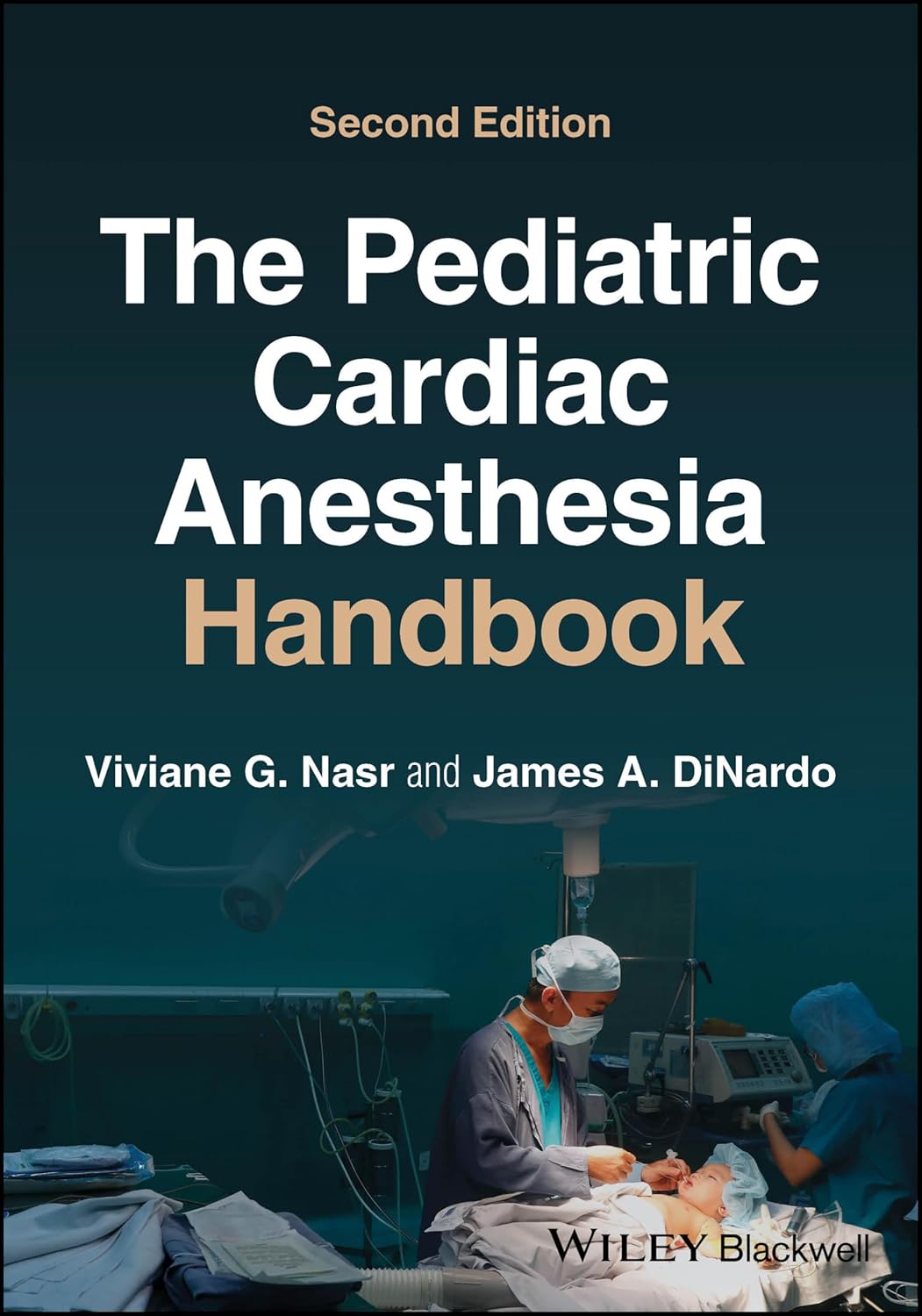
Edition 1 (2015)
Jeff Steiner
Why you need this book:
Most introductory anesthesia books are too long and too complex. Where do you begin learning about anesthesia when the basic books are over 800 pages long and weigh four pounds? Even when you do read these books, how will you translate the information into something you can use in the operating room when you are first starting out?
Welcome to Anesthesia Made Easy.
I wrote this book to introduce you to anesthesiology. It is part education guide (to teach you the basics of anesthesia) and part survival guide (to teach you how to apply these basics while in the operating room). It includes the basics of anesthesia without getting too far into the weeds and also gives you a practical approach that will get you started moving in the right direction.
New anesthesiology students struggle with which book to read and where to start. This book will give you not only a solid foundation upon which to start your career but also organize the information in such a way that you can actually use it. At under 200 pages, it is the one basic anesthesia book that you can reasonable read cover to cover quickly.
If you are doing anesthesia observations or shadowing to see if anesthesia is a good fit for you, you should start with chapter 1, “How to Get the Most from Your Anesthesiology Observation.” Then read chapter 4, “Anesthesiology Basic Concepts,” and chapter 5, “Getting Around in the OR,” to learn the culture of the OR—they will bring you a long way.
If you are applying to AA or CRNA school, then read this book cover to cover before you interview. It will give you a working knowledge of the type of training you will receive. It may also help you in your interview process to give you answers to simple questions about anesthesia care.
If you are an airway rotator, concentrate on chapter 19, “Airway Exam and Evaluation,” chapter 7, “Basic Anesthesia Pharmacology: Medications,” and chapter 24 “Adult Airway Management,” chapter 25 “Pediatric Airway Management,” and chapter 27 “Rapid Sequence Induction (RSI).”
If you are on your first anesthesia rotation, start at the front of Anesthesia Made Easy and work your way through before you start your rotation. This book is meant to be a quick read. Bring the book with you to the operating room and take notes in the notes section.
Looking for more information about anesthesiology?
Check out AnesthesiaMadeEasy.com/AMZ and see what we have to offer.
Praise for Anesthesia Made Easy
“A concise review of the basic fundamentals of anesthesiology. Written in outline form, this book provides the essentials for anyone interested in anesthesiology. I would highly recommend for medical students, beginning anesthesia residents, AAs and CRNAs.” Eugene Chung, D.O. - CA-1 Resident
“Providing an introductory approach on a topic as broad and in depth as anesthesia is nearly impossible, and therefore many novices find themselves up to their elbows in thousand page textbooks not knowing where to start. Dr Steiner has successfully compiled a basic guide that provides a starting point for providers just beginning their journey into the world of anesthesia." Ryan A Sexton, RN, MSN, CRNA - Practicing CRNA
"A great book for medical students and residents looking to get the most out of their anesthesia rotation! It provides useful information on airways, common anesthetic medications, and basic anesthesia theory. It also gives a small glimpse into the OR from the unique perspective of the anesthesiologist.” Amy P. Woods, M.D. - Faculty Anesthesiologist

Edition 7 (2025)
Brian Keech, Ryan Laterza, Thomas Moore
For more than 30 years, the highly regarded Secrets Series® has provided students and practitioners in all areas of health care with concise, focused, and engaging resources for quick reference and exam review. Anesthesia Secrets, 7th Edition, offers practical, up-to-date coverage of the full range of essential topics in this dynamic field. This highly regarded resource features the Secrets’ popular question-and-answer format that also includes lists, tables, pearls, memory aids, and an easy-to-read style―making inquiry, reference, and review quick, easy, and enjoyable.
The proven Secrets Series® format gives you the most return for your time―succinct, easy to read, engaging, and highly effective
Fully revised and updated throughout, offering practical coverage of the full range of essential topics in the practice of anesthesiology, including protocols and guidelines that are continuously evolving and that increasingly dictate best practices
Contains new chapters on Infection Diseases and Anesthesia, Head and Neck Anesthesia, Anesthesia and the Developing World, and Non-Operating Room Anesthesia
Top 100 Secrets and Key Points boxes provide a fast overview of the secrets you must know for success in practice and on exams
Portable size makes it easy to carry with you for quick reference or review anywhere, anytime
Edition 3 (2022)
Jesse Ehrenfeld, Richard Urman, Scott Segal
This comprehensive update of the previous two successful editions covers both basic and advanced anesthesia topics. These include pharmacology, procedures, monitoring, equipment, subspecialty anesthesia, safety, professionalism, pain management, and more.
Chapters are concise, easy-to-read, and authored by faculty specialized in medical education. They feature case studies designed to help apply theoretical knowledge to real patient situations, as well as questions and answers.
A convenient resource for medical students, student registered nurse anesthetists, and student anesthesiologist assistants in any student of anesthesia will find this unique book useful.

Edition 10 (2021)
Richard Pino, Edward Bittner, Hovig Chitilian, Wilton Levine, Susan Vassallo
Written by residents and attendings at the world-renowned Massachusetts General Hospital Department of Anesthesia, Clinical Anesthesia Procedures of the Massachusetts General Hospital, Tenth Edition, offers current, comprehensive, and concise guidelines on all facets of anesthesia, perioperative care, critical care, and pain management. Emphasizing the clinical fundamentals necessary for patient safety and optimal outcomes, this trusted guide provides fast answers to the most frequent problems encountered in daily anesthetic practice, making it an invaluable resource for practicing anesthesiologists and residents as well as nurse anesthetist trainees and practitioners.
Focuses on the clinical fundamentals needed for the safe delivery of anesthesia and perioperative care in day-to-day practice.
Uses an easy-to-scan outline format that progresses intuitively from preoperative evaluation through administration of anesthesia to perioperative issues for each subject.
Updated and reorganized table of contents in addition to chapters on evaluating the patient, anesthesia for pediatric surgery and care of the neonate, non-operating room anesthesia and pain management.
Includes new chapters on the basics of echocardiography, anesthesia for orthopedic surgery, anesthesia for transplant surgery and vascular access. Features appendices covering drugs and intravenous antibiotics.

Edition 2 (2018)
Erin Williams, Olutoyin Olutoye, Catherine Seipel, Titilopemi Aina
This second edition of Clinical Pediatric Anesthesia: A Case-Based Handbook offers a comprehensive review of the options, advantanges, and disadvantages of different aspects of the perioperative management of the pediatric patient, as well as examples of a wide range of relevant clinical scenarios. Chapters are organized into 15 sections and cover the field of pediatric anesthesiology with a point-of-care approach. Written by a team of over 50 Pediatric Anesthesiologists at tertiary children's hospitals, this highly accessible text provides readers with multiple approaches to the anesthetic care of the pediatric patient. Each chapter includes an introduction to the topic, followed by learning objectives, clinical vignettes, and a discussion section styled in a question-and-answer format, concluding with a summary of the highest-yield and most salient information. Chapters also provide annotated references and suggestions for further reading to facilitate in-depth study of topic. The variety of cases presented, along with the contributors' expertise, render valuable real-life clinical situations that promote critical thinking and evaluation necessary for all pediatric anesthesiology consultants.

Edition 7 (2023)
Edward Bittner
With concise, full-color coverage of this rapidly enlarging field, Critical Care Handbook of the Massachusetts General Hospital, Seventh Edition, is your go-to guide for practical, complete, and current information on medical and surgical critical care. Edited by Drs. Edward A. Bittner, Lorenzo Berra, Peter J. Fagenholz, Jean Kwo, Jarone Lee, and Abraham Sonny, this user-friendly handbook is designed for rapid reference, providing reliable, hospital-tested protocols that reflect today's most advanced critical care practices. An at-a-glance outline format and portable size make it an essential manual for medical students, residents with rotations in ICUs, and physicians and nurses who work in critical care.
Reflects a multidisciplinary approach throughout, in a convenient size for on-the-go reference
Contains well-written, comprehensive coverage of general principles, specific considerations such as ARDS, and health care services such as ICU handoffs and transitions
Uses an efficient outline format with bolded key words and concepts
Includes new chapters on critical care management of COVID-19, heart failure, and pulmonary hypertension
Written by MGH attendings, fellows in critical care, nurses, and residents in anesthesia, critical care, and pain medicine, with input from surgery, pulmonary care, pediatrics, neurology, and pharmacy

Edition 7 (2016)
Jerrold Lerman, David Steward, Charles Cote
Authored by three world experts, this is a clinically focused book on pediatric anesthesia. "The Manual", as it is known, has long dominated the market for a succinct and practical resource on administering anesthesia to children and is used by residents, general anesthesiologists, nurse anesthetists, and pediatric anesthesiologists. This new edition retains the basic structure of the book and is updated throughout. Text-heavy in the current edition, the Seventh Edition features the addition of figures to chapters where they are especially helpful (eg, the chapter on cardiovascular surgery and cardiac procedures) and makes greater use of headings to break up the text and guide reading. From reviews of the Sixth Edition:"This is an extremely well written book that I would recommend highly to anyone involved in anaesthetizing children. It is comprehensive enough to provide an excellent reference for trainees and general anaesthetists who occasionally deal with paediatric cases, while at the same time giving valuable supplemental information for paediatric anaesthetists encountering an unusual procedure or condition. In short, this is a book that would make a welcome addition to any anaesthetist's mobile library." --Anaesthesia
Edition 1 (2024)
Richard Urman, Patricia LaMontagne
A high-yield, abridged version of the bestselling guide to general anesthesia and perioperative medicine
Drawing from the trusted classic, Morgan and Mikhail's Clinical Anesthesiology Handbook has been pared down to the most essential information needed by anesthesia practitioners.
The Handbook provides condensed, practical content relevant to clinical anesthesiology practice, covering topics within preoperative, intraoperative, and postoperative care. Many tables and figures have been retained from the larger textbook. This new abridged resource serves as a high-yield review of the core content of the larger text, with bolded key concepts for ease of reference, Q&A, and more.
• Convenient, abridged version―less than half the length of origin text
• Ideal resource for residents and trainees preparing for daily activity
• High-yield review with variety of review techniques, including Q&A

Edition 2 (2018)
Annette Vegas
Transesophageal echocardiography (TEE) is a valuable diagnostic modality now routinely used during cardiac surgery and in the intensive care unit. Increasingly, anesthesiologists, cardiologists and critical care physicians trained in TEE provide the service in both settings where they face the challenge of integrating numerous current TEE guidelines into day-to-day practice. Perioperative Two-Dimensional Transesophageal Echocardiography: A Practical Handbook, 2nd Edition has been designed to be a concise, portable guide for using TEE to recognize cardiac pathology during the perioperative period.
This compact guide has a diverse appeal for anesthesiologists, cardiac surgeons and cardiologists desiring comprehensive up-to-date echocardiographic information at their fingertips.
Features
Updated to include 4 new chapters
Now contains more than 600 full-color, high quality clinical images and illustrations
Includes the most recent guidelines
Retains a compact format that highlights key information
Synopsis of cardiac pathology commonly encountered in cardiac surgery patients
On-the-spot reference for echocardiographers with a wide range from novice to expert experience

Edition 5 (2024)
Richard Urman, Jesse Ehrenfeld
Designed for portability and quick reference, Pocket Anesthesia, Fifth Edition, provides the essential information needed by practitioners and trainees on a daily basis. Expertly edited by Drs. Richard D. Urman and Jesse M. Ehrenfeld, this fully updated volume provides a concise and focused review of all areas of anesthesiology in one easy-to-navigate, pocket-sized notebook, making it an ideal reference for residents, anesthesiologists, CRNAs, CAA’s and students, in all clinical settings where anesthesia care is delivered.
Follows the bestselling, looseleaf Pocket Notebook format, featuring bulleted lists, tables, diagrams, and algorithms that make essential facts easy to find and retain
Contains fully updated core clinical topics on patient evaluation; pharmacology; airway management; regional anesthesia, POCUS, perioperative monitoring, ventilation techniques, acute and chronic pain management, ERAS, trauma and critical care management, pediatric and geriatric anesthesia, and much more
Provides helpful appendices on formulae for quick reference, setting up the OR, management of malignant hyperthermia, and more
Features new and expanded chapters on Burn Management, Infection Control and Respiratory Illness Considerations (including COVID-19), Optimizing the Anesthesia Care Team
Contains current, evidence-based clinical recommendations

Edition 2 (2025)
Viviane Nasr, James DiNardo
A concise yet comprehensive overview of the anesthetic management of pediatric patients with congenital heart disease
Designed for ease of use, The Pediatric Cardiac Anesthesia Handbook is divided into two parts: Part One covers the basic assessment of patients, including cardiovascular physiology, the pathophysiology of coronary heart disease, preoperative evaluation, intraoperative management, and interpretation of cardiac catheterization data. Part Two contains templated chapters that address a variety of disorders, allowing easy reference to anatomical and physiological features, surgical therapies, anesthetic approach, and postoperative management.
Now in its second edition, The Pediatric Cardiac Anesthesia Handbook contains new chapters on coagulation and blood management, echocardiography, risk scoring systems, and postoperative critical care management, as well as a completely revised chapter on mechanical circulatory support.
Providing clear and reliable, this easily referable pocket-sized resource:
Addresses the additional complexities of pediatric patients and the anesthetic considerations for non-cardiac surgery after heart and heart-lung transplantation
Provides guidelines on specific lesions for the pediatric anesthesiologist caring for cardiac patients presenting for non-cardiac surgery
Contains templated chapters that allow easy reference by members of the multidisciplinary team, such as cardiologists, cardiac intensivists, perfusionists, and surgeons
Features high-quality illustrative echocardiographic images in every chapter and bulleted content designed for rapid reference
Written by an expert author team at the world-renowned Boston Children’s Hospital, The Pediatric Cardiac Anesthesia Handbook is a must-have guide and study aid for anesthesiology and cardiac critical care trainees and practitioners who manage patients with congenital heart disease.

